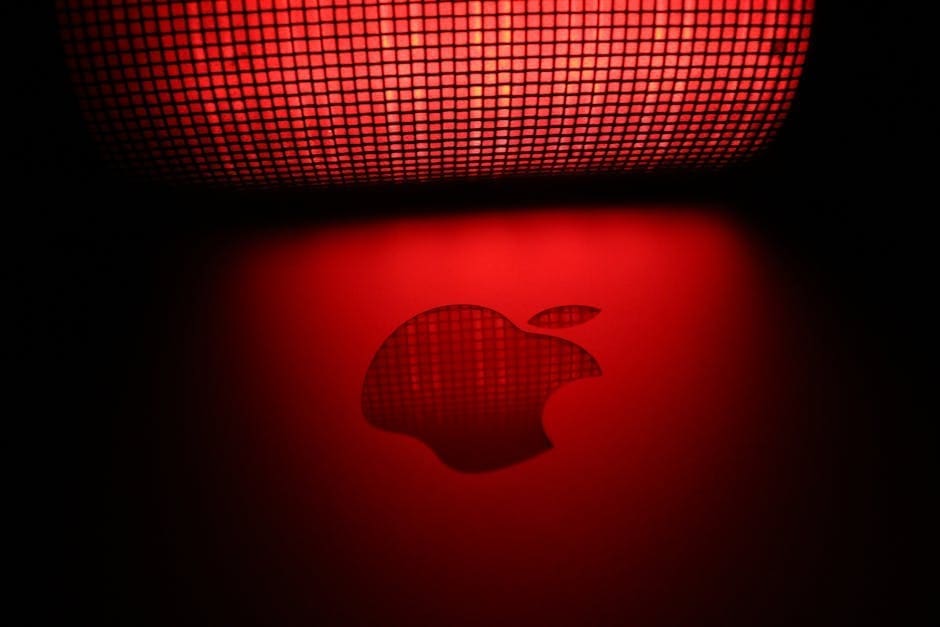
When you search for company logos, you’re diving into brand identity and recognition. Logos are more than just pictures or designs. They are the face of a company, embodying its values, its mission, and its products. They play a critical role in making a brand memorable and distinctive in a crowded market.
A strong logo can elevate your brand, making it easily identifiable among competitors and helping to instill trust in your target audience. Think of logos like Nike’s swoosh or Apple’s apple; simple, yet instantly recognizable across the globe. This immediate identification is what every brand strives for, as it fosters familiarity and loyalty among customers.
For small business owners, understanding the power of an effectively designed logo is the first step in establishing a formidable brand presence. Whether you’re about to launch your first business or looking to rebrand, grasp the basics of logo importance and how it contributes to brand recognition.

The Power of Simplicity
In the realm of company logos, simplicity often reigns supreme. Let’s explore how three iconic brands – Nike, Apple, and Twitter – have leveraged simplicity to create logos that are instantly recognizable across the globe.
Nike’s Swoosh
The Nike Swoosh is a masterclass in simplicity. It’s more than just a checkmark – it represents speed, movement, and the wing of the Greek goddess Nike. With just a few strokes, it conveys the essence of the brand: excellence in performance. The lesson here is that a simple, bold shape can communicate your brand’s identity and values without the need for complexity.
Apple’s Apple
The Apple logo is another example of simplicity at its best. An apple with a bite taken out of it is an image that’s hard to forget. It’s clean, it’s elegant, and it speaks to the brand’s focus on sleek, user-friendly design. The bite also adds a layer of intrigue and is a nod to the pursuit of knowledge, echoing the story of Adam and Eve. This shows how adding a simple twist to a familiar object can create a memorable and meaningful logo.
Twitter’s Bird
Twitter’s bird logo, named Larry, embodies the essence of the platform: communication, freedom, and the spread of ideas. With its uplifted wings, it conveys a sense of movement and immediacy, reflecting the exchange of tweets. The simplicity of the bird design makes it adaptable and recognizable in any size, which is crucial for the digital age where logos must be legible on devices ranging from a watch to a billboard.
The Key Takeaway
The common thread among these logos is that they are all simple, yet powerful. They use clean lines and shapes to convey their brand’s identity and values. This simplicity makes them versatile, memorable, and effective in connecting with their audience on a deep level.
For brands looking to create or redesign their logo, these examples underscore the importance of finding the core essence of your brand and expressing it in the simplest form possible. In company logos, less is often more.
Moving on, let’s delve into how some brands have gone beyond just logos to embody their entire brand identity through these visual symbols.
Discover more about the power of simplicity in logo design
Embodying Brand Identity
In the realm of company logos, some brands have masterfully encapsulated their entire brand identity, values, and mission into their logos. Let’s explore how Facebook, World Wildlife Fund (WWF), and Google have achieved this.
Facebook has undergone several logo changes, but its most recognized logo is the lowercase ‘f’ on a blue background. This simplicity is deceptive; the color blue stands for trust, calm, and communication, mirroring Facebook’s goal of connecting people globally. The ‘f’ isn’t just a letter; it’s an emblem of connectivity, a digital ‘where everyone knows your name.’ It’s a reminder that at Facebook, community and connections are at the forefront.
World Wildlife Fund (WWF) presents a starkly different but equally powerful image with its panda logo. This logo is a masterclass in embodying brand identity. The panda, an endangered species, immediately evokes conservation and the vulnerability of nature. The choice of a panda, a beloved and recognizable animal, helps make the abstract concept of wildlife conservation more tangible and relatable to the public. Moreover, the black-and-white color scheme is visually striking and memorable, ensuring that the logo—and the cause—stands out.

Google, on the other hand, uses color and simplicity to its advantage. Its logo, featuring a clean, sans-serif typeface and a playful sequence of primary colors interrupted by a single letter in secondary color, speaks volumes. This design choice reflects Google’s core identity: innovative, user-friendly, and slightly unconventional. Google’s logo promises a gateway to limitless information and creativity, all while maintaining an approachable, human touch.

These companies have expertly woven their values, mission, and identity into their logos, making these symbols far more than just parts of their brand’s visual identity. They are, in essence, the heart and soul of these brands, communicating their core message at a glance.
Understanding the depth and significance behind these logos offers invaluable lessons in branding. It’s not just about creating a visually appealing design but about infusing it with the essence of what the brand stands for. This alignment between visual symbolism and brand identity is what makes a logo truly iconic.
For those embarking on the journey of designing a logo, these examples underscore the importance of digging deep into what your brand represents and creatively expressing those values through your logo. It’s a delicate balance of art, strategy, and identity, but when done right, your logo can become your most powerful branding tool.
Learn more about the significance of company logos
We’ll explore icons of various industries and how their logos have stood the test of time, becoming symbols of trust, quality, and innovation.
Icons of Industry
In the realm of iconic company logos, certain names stand out as benchmarks of excellence and innovation. IBM, BMW, and Coca-Cola not only represent their respective industries but also embody the essence of powerful branding. Let’s dive into what makes these logos unforgettable.
IBM – The simplicity of the IBM logo, with its distinctive striped letters, speaks volumes about sophistication and technology. The horizontal stripes suggest speed and dynamism, reflecting IBM’s commitment to innovation and progress. This logo is a masterclass in how minimal design can convey a company’s core values and futuristic vision.
BMW – The BMW logo is a classic example of a logo that tells a story. The emblem, resembling a propeller in a blue sky, pays homage to the company’s history in aviation. The colors of the Bavarian flag are cleverly integrated, rooting the brand in its heritage while emphasizing luxury and performance. BMW’s logo demonstrates how a logo can encapsulate a brand’s legacy and aspirational qualities.
Coca-Cola – Few logos are as instantly recognizable as Coca-Cola’s flowing script. The logo’s enduring appeal lies in its emotional resonance; it evokes feelings of joy, nostalgia, and refreshment. Coca-Cola’s logo serves as a reminder that a great logo transcends its visual elements to connect with people on a deeper level.
Why These Logos Stand Out:
– Simplicity and Clarity: Each of these logos is easy to identify, making them memorable and effective at any size or distance.
– Deep Connection with Brand Identity: These logos are not just symbols; they are integral to their brand’s story and values.
– Adaptability: Despite being decades old, these logos remain relevant and adaptable to modern branding needs.
These icons of industry teach us valuable lessons in logo design: a logo should be simple yet meaningful, reflective of the brand’s identity, and versatile enough to stand the test of time. For businesses embarking on the journey of creating their logo, these examples serve as a north star, guiding the way toward designing a logo that could one day be as iconic.
Each of these logos has not only contributed to building a strong brand identity but also demonstrated the power of design in business success. As we move into the details of designing your own logo, keep these examples in mind. They underscore the importance of understanding your brand, brainstorming creative ideas, and refining your design to achieve a logo that truly represents your business.
Learn more about the history and significance of these iconic company logos
Designing Your Own Logo
Designing your own company logo is not just about creating a beautiful design; it’s about encapsulating your brand’s essence in a simple yet powerful visual form. Let’s break down the process into manageable steps.
Understand Your Brand: Before you start sketching out ideas, deeply understand what your brand stands for. What are your core values, mission, and the message you want to convey? This understanding will be the foundation of your logo design.
Brainstorm: With your brand’s essence in mind, start brainstorming ideas. Think about symbols, shapes, and imagery that align with your brand’s identity. Don’t limit yourself in this phase; the goal is to generate as many ideas as possible.
Sketch Ideas: Take your brainstorming session to paper or a digital drawing board. Sketch out your ideas, no matter how rough. This step helps translate your abstract ideas into visual concepts.
Test Sketches: Look at your sketches and think critically about what each design conveys. It’s helpful to get feedback from others at this stage. Ask colleagues or friends what each sketch makes them think and feel about your brand.
Refine Sketch: Choose the most promising sketches and refine them. This involves cleaning up the designs and perhaps combining elements from different sketches to create a more cohesive look.
Develop Layout: Consider how your logo will be used across various mediums — from business cards to your website. Your logo should be versatile, scalable, and legible in different sizes. Experiment with layouts that maintain the logo’s integrity in various formats.
Pick Colors: Colors have a profound impact on how your logo is perceived. Choose colors that reflect your brand’s personality and are appealing to your target audience. Each color has different psychological connotations, so choose wisely.
Choose Font: If your logo includes text, the font you choose is crucial. It should complement the logo’s design and be readable. Like colors, fonts can convey different moods and styles, so select one that aligns with your brand’s character.
Throughout this process, simplicity is key. A simple logo is not only memorable but also versatile and timeless. Don’t rush the process — developing a strong logo requires time and thought.
For additional inspiration and guidance, websites like Brands of the World and LOGO.com offer vast collections of company logos. These resources can provide valuable insights into how successful brands have navigated the logo design process.
As we move into exploring where to find logo inspiration, designing a logo is a journey. It’s about finding that perfect visual identity that speaks to your brand’s heart and resonates with your audience.
Learn more about the process of designing company logos.
Where to Find Logo Inspiration
Finding the right inspiration for your logo can be a game-changer in the logo design process. Whether you’re a designer looking for ideas or a business owner wanting to understand what makes a logo stand out, there are several resources you can turn to. Let’s explore some of the best places to find logo inspiration.
Unsplash
Unsplash is renowned for its high-quality, free images. While it’s not exclusively a logo repository, it’s an excellent place for mood boards and thematic inspiration. You can find images related to your business theme and use them to conceptualize your logo’s feel and colors.
Pixabay
Similar to Unsplash, Pixabay offers a wide array of free images. It also includes vector graphics and illustrations, which can be directly inspirational for logo design or indirectly helpful in creating a brand’s visual language.
Pexels
Pexels is another go-to for high-quality, free photos. It’s particularly useful for grasping a sense of modern aesthetic trends that could influence your logo design, ensuring your brand feels current and engaging.
Brands of the World
Brands of the World stands out by offering a vast collection of vector logos. It’s a treasure trove for designers seeking direct logo inspiration from existing brands across various industries. You can analyze successful logos, understand industry trends, and even download vectors to experiment with.
LOGO.com
LOGO.com provides a free online logo generator, making it an excellent tool for quickly visualizing different logo ideas. It’s particularly useful for small businesses or startups looking to create a logo without the hefty design process. The platform offers customization options including fonts, colors, and icons, allowing for a tailored design experience.
Remember, inspiration should serve as a springboard for your creativity, not a template to copy directly. Each of these resources can offer insights into current design trends, color schemes, typography, and the emotional impact of various visuals.
As you explore these sources, keep your brand’s core identity in mind. The goal is to find inspiration that aligns with your brand’s values, audience, and personality. By combining your unique brand essence with elements inspired by these resources, you’ll be well on your way to creating a logo that’s both memorable and meaningful.
After gathering inspiration, the next step is tackling the most common questions surrounding company logos, ensuring you’re fully prepared to embark on the logo design journey.
Frequently Asked Questions about Company Logos
What makes a logo iconic?
An iconic logo is simple, memorable, and timeless. It communicates the brand’s values and essence at a glance. Simplicity is key; the easier a logo is to recognize and remember, the more effective it is. Think of the Nike swoosh or the Apple apple. These logos are incredibly straightforward yet powerful in conveying the brand’s identity.
Moreover, versatility plays a crucial role. An iconic logo looks good on any platform, whether it’s a digital screen, a billboard, or a business card. Lastly, relevance to the brand is crucial. The logo must align with what the brand stands for and its market positioning.
How can I design a logo for my company?
Designing a logo for your company involves a few steps:
- Understand Your Brand: Clearly define what your brand stands for, its core values, and its personality. This foundation will guide your logo design.
- Brainstorm Ideas: Look at logos in your industry and think about how you can differentiate your brand. Consider your brand’s unique aspects and how they can be visually represented.
- Sketch Ideas: Put pen to paper and start sketching your ideas. Don’t worry about perfection at this stage; focus on creativity and exploration.
- Test Sketches: Share your sketches with others to get feedback. Look for reactions to see which concepts resonate the most.
- Refine Your Sketch: Based on feedback, refine your sketch. This step may involve several iterations.
- Develop Layout and Pick Colors: Consider how your logo will look in different layouts and color schemes. Colors have psychological impacts, so choose those that align with your brand’s message.
- Choose a Font: If your logo includes text, select a font that complements your visual elements and brand personality.
Creating a logo is a process. It’s about translating your brand’s essence into a visual form that connects with your audience.
Where can I find high-quality logos for inspiration?
Finding high-quality logos for inspiration is easy with the right resources. Websites like Brands of the World and LOGO.com offer vast collections of logos from various industries. These platforms allow you to see a wide range of design styles and concepts, which can spark ideas for your own logo.
Other resources include design platforms and communities like Dribbble and Behance, where professional designers showcase their work. Don’t forget about social media platforms, especially Pinterest and Instagram, which are goldmines for creative inspiration.
When looking for inspiration, remember to focus on how these logos convey their brand’s essence and consider how you can apply similar principles to your logo to make it unique and meaningful for your brand.
After understanding these key aspects of company logos, you’re ready to move forward with confidence in designing a logo that represents your brand’s identity and values, setting the foundation for strong brand recognition.
Conclusion
We’ve journeyed through company logos, exploring their power, simplicity, and how they embody brand identity. From iconic examples like Nike and Apple to the critical steps in designing your own logo, it’s clear that a logo is more than just a graphic; it’s a storytelling tool that captures the essence of your brand.
Now, let’s bring it home to ****. Our expertise and passion for branding shine through in every project we undertake. We understand that your logo is the face of your brand, a first impression that can open the doors to deeper engagement. That’s why we’re dedicated to crafting logos that are not only visually stunning but also resonate with your brand’s unique identity and values. Whether you’re starting from scratch or looking to refresh an existing logo, our team is here to guide you through the process, ensuring your brand stands out in a crowded marketplace.
At , we believe that every brand has a story worth telling. Your logo is a key piece of that story. Let us help you tell it in the most compelling way possible. Explore our wide range of services tailored to elevate your brand and discover how we can transform your vision into reality. Ready to create a logo that leaves a lasting impression? Start your journey with today.
The right logo can make a world of difference. It’s not just about aesthetics; it’s about crafting an identity that speaks to the heart of your brand and connects with your audience on a meaningful level. At , we’re not just creating logos; we’re building legacies. Let’s build yours together.





